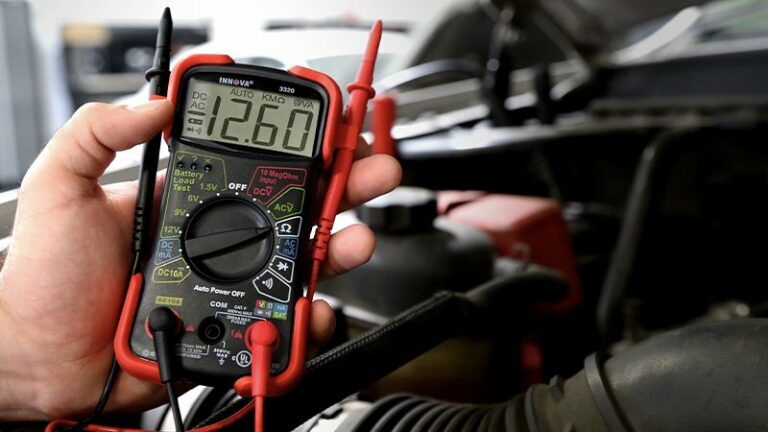Efficient Car Battery Storage: How To Store A Car Battery
Today we discuss Car Battery Storage. Proper storage is essential for maintaining a car battery’s performance and lifespan. Whether you intend to store it long-term or temporarily, following the right steps is key to prevent damage and ensure it remains ready for use in your vehicle.
This article will walk you through the correct procedure for storing a car battery to help you steer clear of any potential issues down the road. Let’s begin!
Car Battery Storage:
Car batteries are essential for vehicles to start and operate electrical systems. Proper storage is vital for maintaining performance and lifespan. Learn how to store car batteries effectively in this guide.
Understanding the Importance of Proper Car Battery Storage:
Properly storing a car battery is crucial to avoid damage and preserve its function. Extended periods of non-use can lead to discharge, electrolyte loss, or harm from extreme temperatures or humidity. Adhering to correct storage guidelines will safeguard your battery and maintain its performance for future use.
Preparing the Car Battery for Storage:
Before storing a car battery, it’s crucial to prepare it properly to reduce the risk of damage and maximize its longevity. Here are the essential steps to follow:
Cleaning the Battery:
Start by cleaning the battery to remove any dirt, debris, or corrosion. Use a mixture of baking soda and water to gently scrub the battery terminals and cable connections. Rinse with clean water and dry thoroughly.
Inspecting for Damage:
Inspect the battery for any visible signs of damage, such as cracks, bulges, or leaks. If you notice any issues, it’s advisable to replace the battery before storing it.
Disconnecting the Battery:
To prevent self-discharge and electrical drain during storage, disconnect the battery’s negative terminal first, followed by the positive terminal. Be cautious and avoid touching both terminals simultaneously, as this can cause a short circuit.
Choosing the Right Storage Location:
Selecting an appropriate storage location for your car battery is essential. Here are some factors to consider:
Temperature Considerations:
Store the battery in a location with a stable temperature, ideally between 50°F (10°C) and 80°F (26°C). Extreme temperature fluctuations can lead to battery deterioration.
Humidity Control:
Avoid storing the battery in areas with excessive humidity. High humidity levels can cause corrosion or affect the battery’s internal components. If necessary, use a dehumidifier or silica gel packs to maintain a dry environment.
Selecting an Appropriate Storage Container:
Choosing the right storage container is crucial for protecting the battery from physical damage and preventing exposure to external elements. Consider the following when selecting a storage container:
– Use a plastic or wooden container to minimize the risk of accidental electrical discharge.
– Ensure the container is clean and free from any flammable materials.
– If storing multiple batteries, place them in separate compartments or use non-conductive dividers.
Battery Discharge Prevention:
To prevent battery discharge during storage, take the following steps:
Charging the Battery:
Before storing, make sure the battery is fully charged. A fully charged battery is less likely to self-discharge and helps maintain its charge during storage.
Using a Battery Maintainer:
Consider using a battery maintainer or trickle charger designed for long-term storage. These devices supply a low current to the battery, preventing self-discharge and ensuring it remains fully charged.
Battery Maintenance During Storage:
Regular maintenance during battery storage helps ensure it remains in optimal condition. Here are a few essential maintenance tasks:
Regular Inspection:
Inspect the battery periodically for any signs of leakage, corrosion, or damage. Additionally, check the battery voltage using a voltmeter to ensure it remains within the recommended range.
Cleaning and Terminal Protection:
Clean the battery terminals and cable connections periodically during storage to remove any corrosion. Apply a thin layer of petroleum jelly or terminal protection spray to prevent future corrosion.
Safe Handling and Transportation Guidelines:
When handling or transporting a stored battery, it’s crucial to follow safety guidelines to prevent accidents or damage. Here are some important tips to keep in mind:
– Always wear protective gloves and goggles when handling the battery to avoid contact with corrosive substances or acid.
– Carry the battery with both hands, ensuring it remains stable and doesn’t tip over.
– Avoid stacking or placing heavy objects on top of the battery to prevent physical damage.
Proper Battery Reinstallation:
When it’s time to reinstall the stored battery, following proper procedures ensures a seamless process. Here are the essential steps to follow:
– Reconnect the positive terminal first, followed by the negative terminal.
– Ensure the terminals are tightly secured to prevent electrical issues.
– Clean the terminals and cable connections if necessary before reattaching them.
Common Mistakes to Avoid:
Avoiding common mistakes can help prevent damage to the battery and ensure a smooth storage experience. Here are a few mistakes to steer clear of:
Storing the Battery on Concrete:
Storing a battery directly on concrete can lead to discharge due to the porous nature of concrete. Place a wooden board or insulating material under the battery to create a barrier.
Failing to Maintain the Battery’s Charge:
Allowing the battery to discharge completely or storing it without a full charge can lead to sulfation and permanent damage. Always charge the battery before storage and periodically check its voltage.
Ignoring Safety Precautions:
When handling or storing a car battery, safety should be a top priority. Wear protective gear and follow safety guidelines to avoid accidents or exposure to harmful substances.
How To Store Car Battery & Charger To Use (6 EASY TIPS)
Faqs for Car Battery Storage:
A car battery can typically be stored for around 3 to 6 months without any issues. However, the exact duration may vary depending on various factors such as the battery’s age, condition, and initial charge level. It’s important to periodically check the battery’s voltage during storage and recharge it if the voltage drops below a certain level. If you plan to store the battery for an extended period, it is advisable to use a battery maintainer or trickle charger to keep it charged and in good condition.
Yes, it is recommended to disconnect the car battery when storing it for an extended period. This helps prevent any unnecessary drain on the battery caused by electrical systems or accessories that may still be active even when the vehicle is not in use. By disconnecting the battery, you ensure that it retains its charge and remains in good condition during storage. Remember to always remove the negative (black) cable first and reconnect it last when re-installing the battery.
When storing a car battery, it is essential to take certain precautions to ensure safety and maintain battery health. Avoid storing the battery near heat sources or in areas with extreme temperatures, as this can affect its performance. Additionally, keep the battery away from flammable substances and in a well-ventilated area. It’s also a good idea to periodically inspect the battery for any signs of damage or leakage and promptly address any issues that may arise.
Storing a car battery directly on a concrete floor is generally safe and will not cause any harm to the battery. However, it’s recommended to place a non-conductive barrier, such as a wooden board or a rubber mat, between the battery and the concrete surface. This precautionary measure helps prevent any potential discharge caused by the slight conductivity of concrete. By using a barrier, you can ensure the battery retains its charge and remains in good condition during storage.
Final Thoughts
Storing a car battery properly is crucial to ensure its longevity and optimal performance. By following a few simple steps, you can protect your battery during periods of inactivity or storage. Firstly, make sure to clean the battery terminals and remove any corrosion. Next, store the battery in a cool and dry place, away from direct sunlight and extreme temperatures. It is essential to keep the battery charged to prevent it from dying or losing its capacity. Regularly checking the battery’s charge level and giving it a boost if necessary can help maintain its health. By adhering to these guidelines on how to store a car battery, you can extend its lifespan and avoid potential issues in the future.


